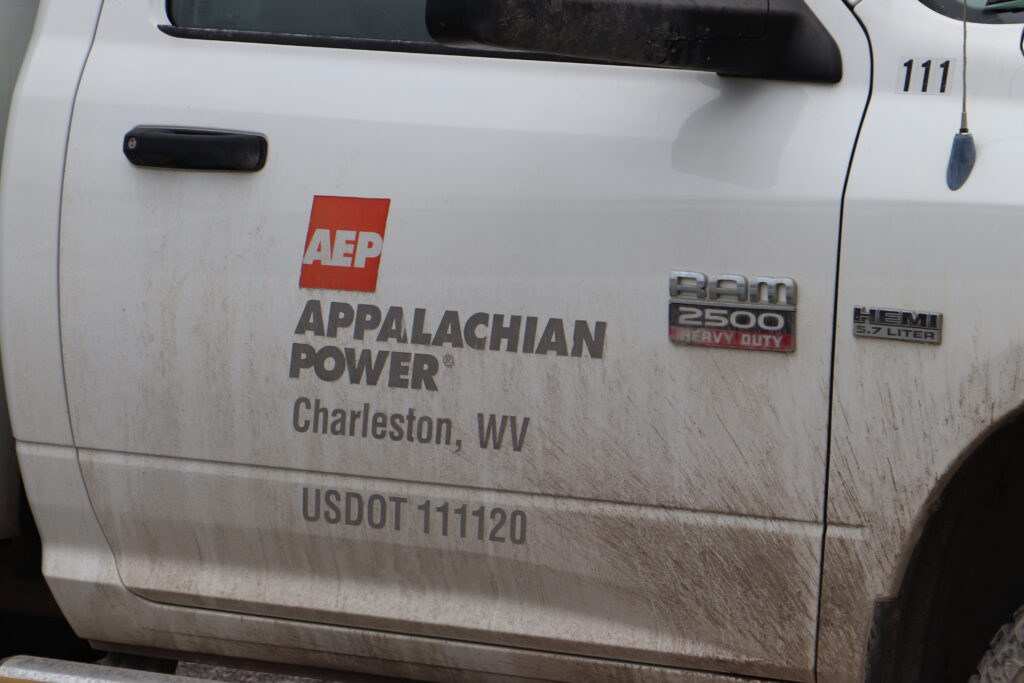Coal may keep the lights on in West Virginia, but keeping the lights on is costing Appalachian Power customers more.
The state Public Service Commission, tasked with regulating public utilities, is getting an earful about Appalachian Power’s proposal to raise rates.
Its docket has been filled with comments from residents opposing the company’s latest rate increase since it was announced in early August. The Kanawha and Fayette county commissions and the Lincoln County Schools superintendent have joined the chorus.
Appalachian Power is asking residential customers who use 1,000 kilowatt hours a month to pay an additional $28.72.
That’s in a state where 18 percent of residents live in poverty, above the national average of 13 percent. Median household income in West Virginia is $20,000 less than what it is nationwide.
Though the PSC suspended the proposed 17 percent increase until next May, people have already spoken out at PSC hearings. Community groups held a protest in August in Charleston outside Appalachian Power’s offices.
“There’s, I think, a growing groundswell of anger about utility rates,” said Sean O’Leary, a senior researcher at the Ohio River Valley Institute. He’s tracked the operations and costs of coal-burning power plants in the region for years.
Opponents cite the economic hardships they already faced without the additional cost of power.
Shawna Phillips of West Virginians for Energy Freedom said during the protest at Appalachian Power’s office that church groups helped her pay a $600 electric bill when she was threatened with a shutoff in late 2022.
“Now if they hadn’t come through, I would have had my lights off for Christmas,” she said. “And that ain’t right. That ain’t right.”
Marie Moten of Beckley told the PSC in a public hearing that she can’t afford to pay her power bill and her medical expenses, especially with a disabled daughter.
“I need help,” she said. “Other people need help, and please do not send that power bill up anymore. We can’t stand it. Have mercy on us. We cannot stand it.”
‘Just Fed Up’
West Virginia relies almost exclusively on coal to produce electricity. The state is the nation’s second leading coal producer behind Wyoming. The industry contributes jobs and tax revenues that the state and many communities need.
O’Leary says the public support for coal may not be as ironclad as it once was, especially with the rising cost of electricity.
“My sense is that people are just fed up,” he said.
When Appalachian Power announced its intent to seek a rate increase on Aug. 2, the company cited inflation, higher interest rates and the cost of maintenance.
It, along with its Wheeling Power affiliate, said it had spent $1 billion on generation, transmission and distribution, as well as $118 million on storm recovery.
Karen Wissing, a spokeswoman for Appalachian Power, said the company would work with stakeholders to mitigate the impact of the rate increase but offered no further details.
“We recognize that our rate review application comes at a time when costs for many products and services, including electricity, are increasing,” she said. “Those same types of increases have created the need for us to file our base rate increase request, which is our first base rate case filing since 2018.”
A PSC spokesman didn’t respond to a request for comment.
Losing Money
The 17 percent increase is hardly the first electricity customers have been asked to absorb in recent years.
On Sept. 1, two separate increases will take effect for Appalachian Power customers. One adds $2.71 for environmental compliance costs. The second adds $2.50 a month for 10 years to pay for fuel costs the company incurred in 2021 and 2022, when energy prices skyrocketed.
Appalachian Power is now asking for another $2 a month for fuel costs. That fuel is mostly coal. The PSC has to approve it. It has approved almost every past increase.
West Virginia is more dependent on coal for electricity than any other state in the country. Other states have transitioned away from coal and toward natural gas and renewables in recent years.
Data show both that Appalachian Power’s three coal plants operate less than half the time and that they lose money when they do.
An energy analyst, in written testimony to the PSC, said the John Amos, Mountaineer and Mitchell plants lost a combined $87 million in a recent 12-month period.
An Appalachian Power witness told the commission that the company had too much coal on site at the plants and ran the plants to reduce its inventory, though at a loss.
Too Much Coal
Why do they have so much coal? According to the Sierra Club, it’s because in 2021, the PSC directed Appalachian Power to run its plants as much as 69 percent of the time. None of the company’s plants currently achieve that, and few anywhere come close.
The Sierra Club has sued the PSC in federal court over the directive. Jim Kotcon, chair of the Sierra Club’s West Virginia chapter, says the PSC directive pushed Appalachian Power to engage in costly coal contracts, which led to an oversupply.
“We believe, and I think the evidence shows, that they initiated those contracts in part to satisfy the Public Service Commission’s directive that they run at a 69 percent capacity factor,” he said.
The Sierra Club says Appalachian Power’s rates are up 20 percent in just the three years since the commission issued the 69 percent directive.
Despite evidence that other resources, including gas, wind and solar, would be cheaper for the state’s electricity customers, O’Leary said the PSC continues to extend the state’s reliance on coal.
“They’ve just engaged in a series of decisions that have,” he said, “caused electric rates in West Virginia to climb, primarily to perpetuate markets for coal.”
It may be months before the PSC takes up the Appalachian Power rate case.






















 Curtis Tate/West Virginia Public Broadcasting
Curtis Tate/West Virginia Public Broadcasting
